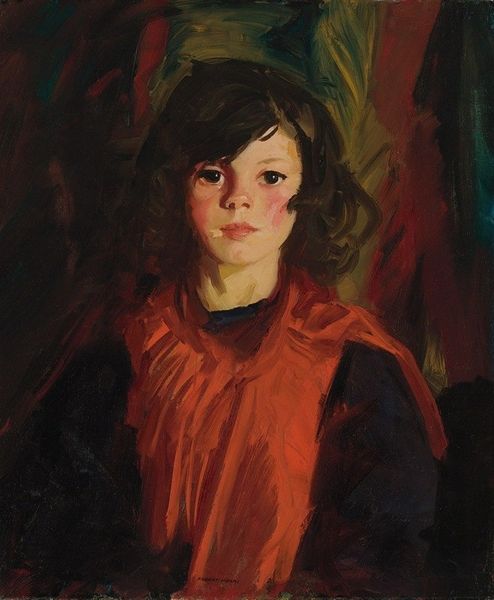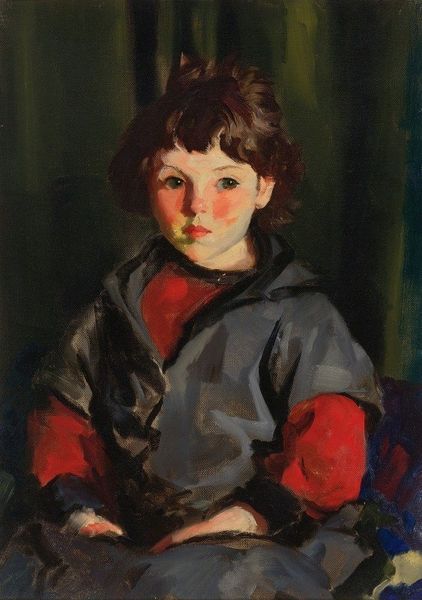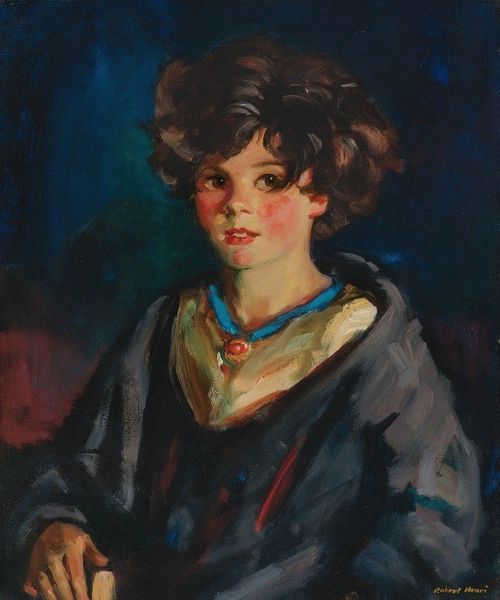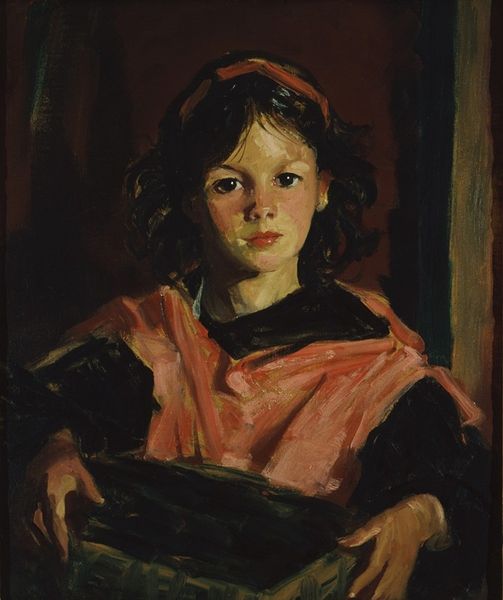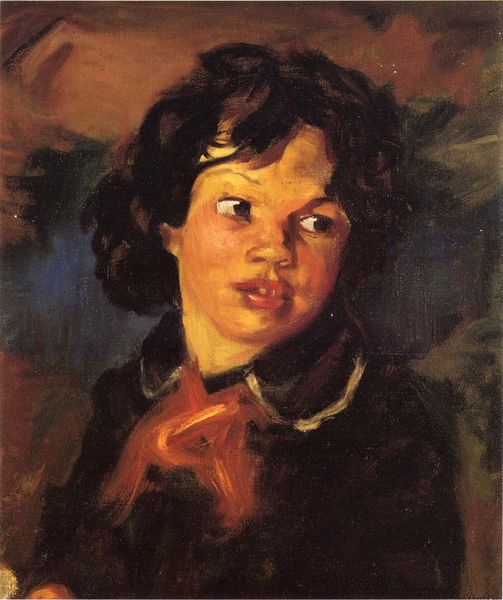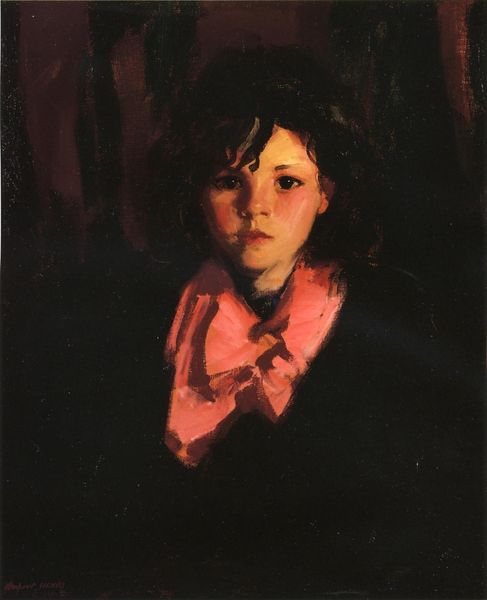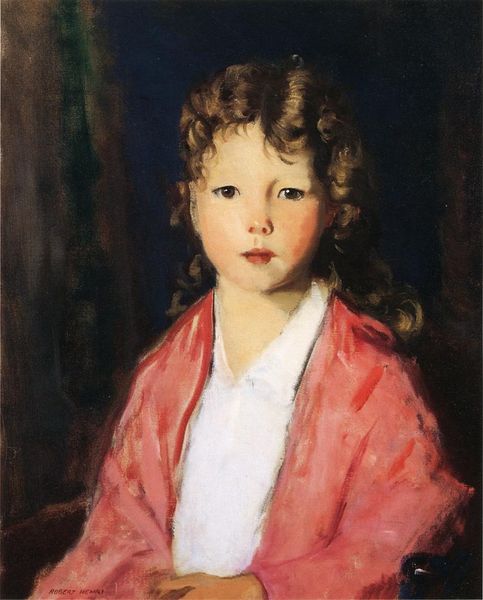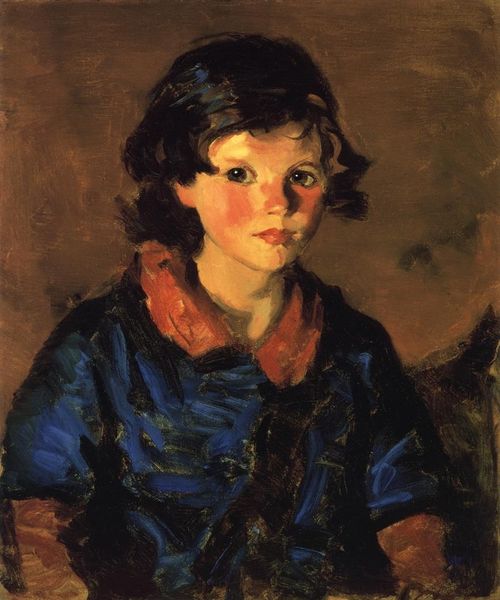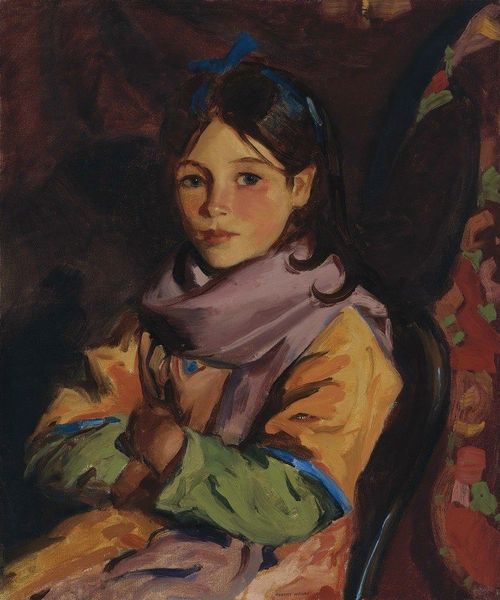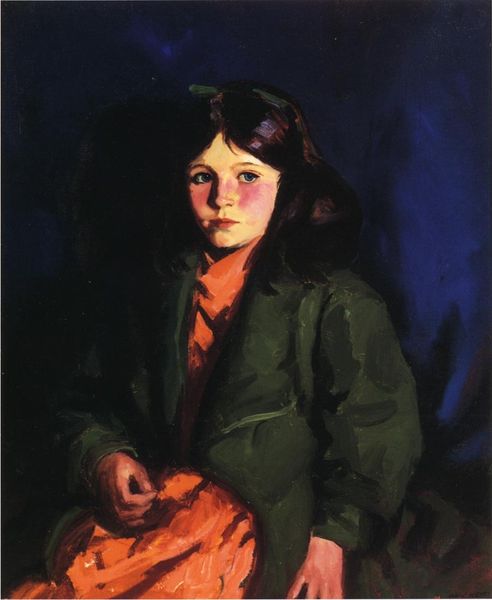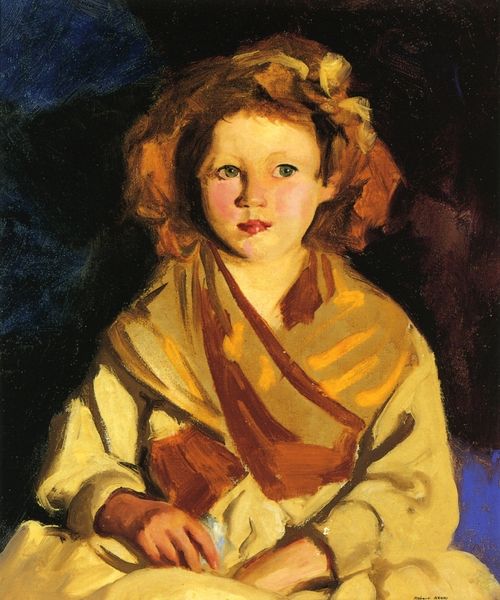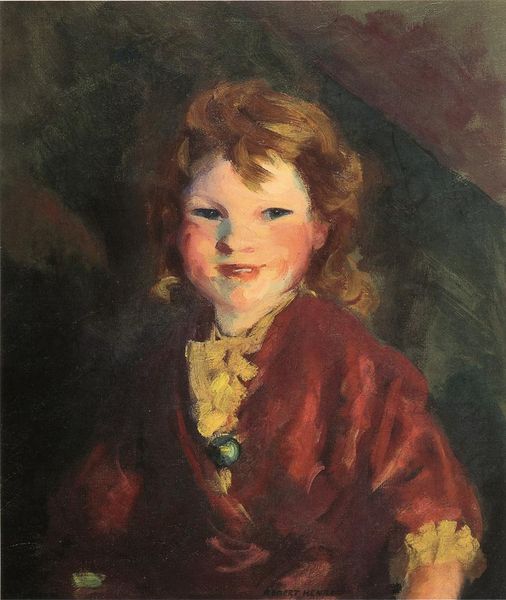
painting, oil-paint, impasto
#
figurative
#
portrait
#
painting
#
oil-paint
#
figuration
#
impasto
#
ashcan-school
#
realism
Copyright: Public Domain: Artvee
Editor: Here we have "Pegeen," an oil painting by Robert Henri. It's a striking portrait of a young girl, seemingly captured in a moment of casual repose. What can you tell me about this piece? Curator: I see an exploration of materiality through Henri's expressive brushstrokes. Notice the impasto technique, the thick application of paint which suggests a tactile quality and lends vibrancy to the sitter's dress. How does the artist's manipulation of oil paint, a readily available industrial product of his time, affect your interpretation? Editor: It feels less polished, somehow. Raw and immediate. Curator: Exactly. This aligns with the Ashcan School's rejection of academic polish, opting for a realism rooted in the everyday experiences. Think about the accessibility of oil paints versus traditional fresco techniques. How does this shift in materials democratize art making, allowing for greater representation of working class subjects? Editor: It’s almost like the cheapness of the medium lets the artist focus more on the subject. Curator: Precisely. It's also worth noting that the mass production and marketing of paints influenced artistic practice, did it not? Think about the commercial networks that supplied artists like Henri. Were they making conscious choices about using such readily-available industrial products to represent working class subjects? Editor: I never thought about paint itself being so relevant! I suppose understanding those material conditions is crucial. Thanks for highlighting those layers. Curator: My pleasure. Thinking about art as a product of specific material conditions really enriches our understanding and, I would say, is the only was to properly see it.
Comments
No comments
Be the first to comment and join the conversation on the ultimate creative platform.
